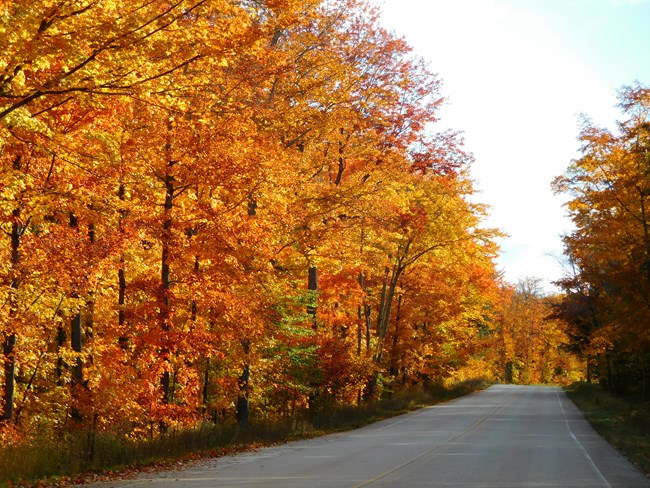
Hunting is permitted within the national lakeshore in accordance with federal migratory bird laws; federal and State of Michigan regulations; and special park regulations. Along with fishing, hunting is an activity specifically allowed by the Congress of the United States when it authorized Pictured Rocks National Lakeshore in 1966. Hunting at Pictured RocksWith its varied topography, lakes, streams, and mixed coniferous and hardwood forest, Pictured Rocks provides habitat for a variety of game animals. Most hunting activities are for white-tailed deer, grouse, woodcock, bear, and snowshoe hare. Whether the method is archery, muzzle loading, or firearms, hunters find ample hunting opportunities from grown-over farm fields to backcountry cedar swamps.The hunting season begins with bear and grouse in September and continues through the winter with snowshoe hare. Refer to your "Michigan Hunting Guide" for specific dates and bag limits. A Michigan hunting license is required, and is available in local communities. Appropriate waterfowl stamps (state and federal) may also be required. Hunting dogs are permitted during legal hunting seasons when accompanied by a licensed hunter, and may travel unrestrained in all backcountry and non-developed areas of the lakeshore. When not actively engaged in hunting, dogs must be restrained on a six-foot leash. State hunting regulations apply in the use of dogs for hunting. Please review information concerning pets at the lakeshore. Hunting RegulationsAll hunting within the Lakeshore follows Michigan Department of Natural Resources regulations and special park regulations.
Fishing at Pictured RocksWith its many streams, inland lakes, and Lake Superior, the park offers a variety of fishing opportunities. Common cool water game fish include smallmouth bass, northern pike, walleye, yellow perch, whitefish, menominee, and smelt. Trout species include brook trout, rainbow trout, lake trout, and coho salmon. RegulationsAll fishing within the park follows Michigan Department of Natural Resources regulations. A valid Michigan fishing license is required to fish in the park. Children under 17 years of age do not require a license. Visitors fishing within Pictured Rocks National Lakeshore must follow the fishing license requirements in accordance with the laws and regulations of the Michigan Department of Natural Resources. Ice FishingIce fishing at the park is done mostly in the frozen nearshore areas of Munising Bay just off Sand Point Beach. Since Sand Point Road is plowed all winter, this area is the easiest frozen water body to access. Those ice fishing should ensure safe ice conditions before venturing out. Currents and wave action can affect ice formation, and the thickness of the ice can vary dramatically from one area to another. The responsibility to determine that ice is safe lies solely with the angler. Fish Consumption AdvisoryThe Michigan Department of Community Health (MDCH) recommends that you use caution when eating certain kinds and sizes of fish from Michigan's lakes and rivers. Some fish have chemicals in them that can be harmful to human health if they are eaten too often. To learn more about this topic, the National Park Service maintains information about Fish Consumption Advisories and Mercury and Toxins in Nature. Exotic Aquatic SpeciesAnglers and resource managers across the U.S. are concerned about invasive species that threaten aquatic systems. Their introduction causes, or is likely to cause, harm to the economy, the environment, or to human health. Aquatic invasive species are a growing risk to parks and their values. In the United States alone, there are more than 250 non-native aquatic species.
Fishing Throughout the National Park ServiceWe invite you to visit the Fish and Fishing website for more information about fish and fishing in the National Park Service. You will learn about conservation, different fish species, and parks that offer fishing. |
Last updated: May 8, 2025
